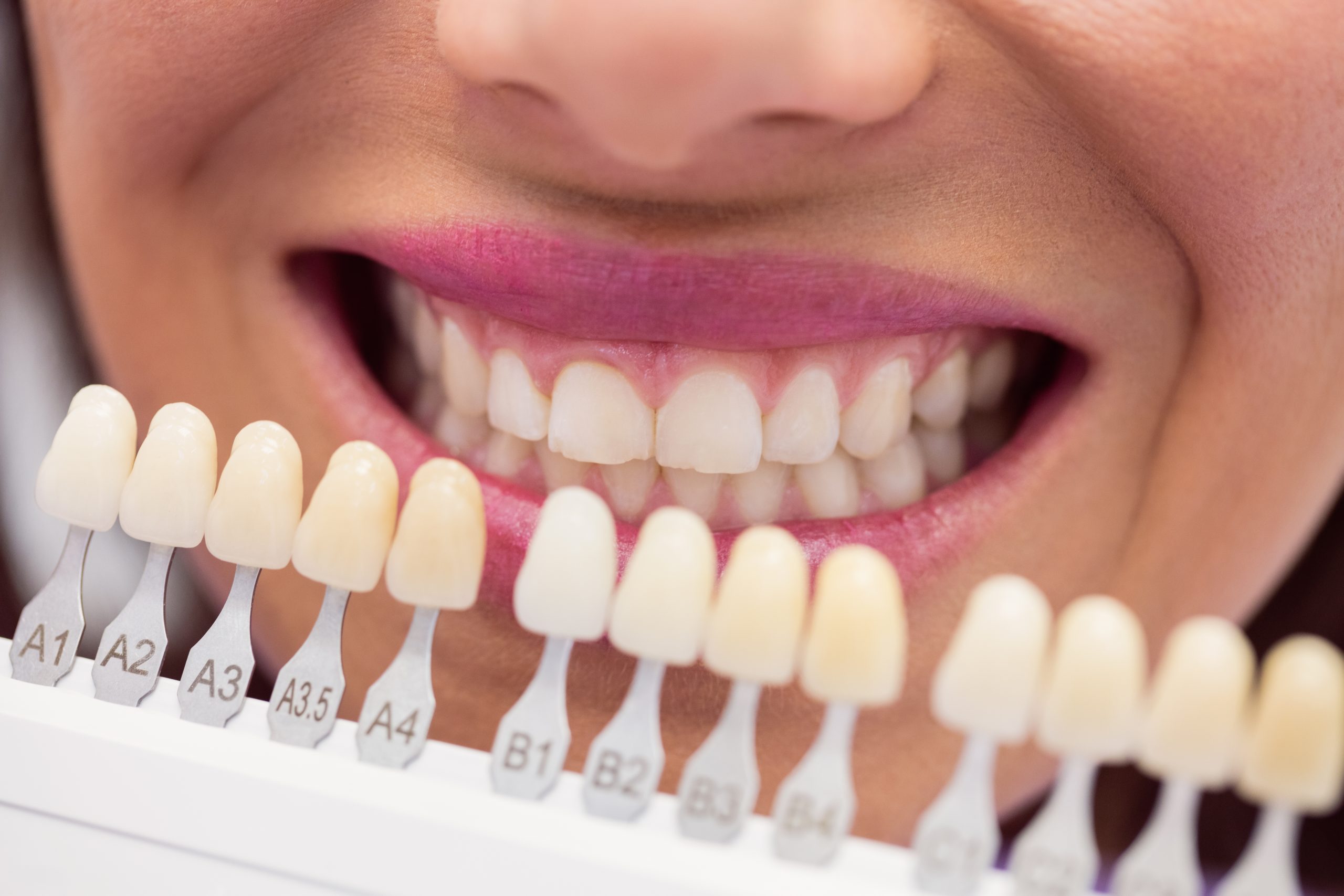Porcelain Laminates & Dental Veneers
Porcelain laminates are one of the fastest and healthiest ways to achieve an ideal smile aesthetic. It can be applied with minimal or even no intervention to the tooth tissue in some cases.
They can be included in the group of minimally invasive dental treatments since they require much less abrasion on the tooth tissue compared to the classical methods (crowns, veneers) applied in smile aesthetics. When applied in the right case with up-to-date techniques and materials, laminate veneers can be considered among the safest and healthiest methods of achieving ideal smile aesthetics.


What is Porcelain Laminate?
Porcelain laminate treatment, also popularly known as leaf porcelain, is applied with minimal abrasion only on the front surfaces of the teeth. It is the treatment of permanently covering the teeth with glass ceramics, which is the material closest to the natural appearance, and giving the person an aesthetic appearance.
Who Can Have Porcelain Laminate Veneers?
Ceramic laminate veneers can be applied to people with mild colour, shape or position disorders in their front teeth.
In addition, it can be applied to all adults who are not satisfied with the natural appearance and do not have severe crowding.
Porcelain laminate veneers are not applied to patients with gum diseases and jaw disorders.
Porcelain Laminate Veneers & Advantages
- Provides Minimal Abrasion to the Tooth Surface
In normal dental veneers, at least 1-1.5mm abrasions are made from every surface of the teeth. While in porcelain laminates, these abrasions are much less, such as as 0.3-0.7 mm only from the front surface of the tooth. In some cases, direct laminates can even be produced without any abrasion.
- Can Be Applied Without Anaesthesia
While anaesthesia is required for veneer cuts, laminates often do not even require anaesthesia.
- Aesthetic Appearance
The result is achieved with a much more aesthetic appearance, stronger adhesion strength and less abrasion than the old type porcelain veneers.
- No Tooth Discolouration
The ceramics used are inherently size and colour stable. In other words, after years, there will be no discoloration and staining on the teeth due to factors such as tea, coffee and cigarettes.
- Short Application Time
The person can have whiter and straighter teeth on the same day.
What is the Lifespan of Porcelain Laminate?
Porcelain laminates do not have a certain lifespan. If the patient has regular dental check-ups and does not neglect oral care routines, they can use their laminates for decades without any problems.
How is Porcelain Laminates Are Made?
In the construction of porcelain laminates, we follow 2 ways according to the requirements of the case.
With the help of 3D cameras, measurements are taken from the person. Professional photographs are taken in our photo studio and the colour, shape and size are decided together with the patient.
All data is sent to our technicians in Izmir and Istanbul. After a 7-10 day production process, laminates are applied in the 2nd session.
Thanks to the high-tech 3D cameras, ceramic engraving devices and porcelain furnaces called CEREC in our clinic, all these procedures are completed on the same day.
The design of the teeth is made by the physician together with the patient. In this way, the person gets their teeth on the same day.
In case of any possible problem in the future, all digital data is recorded in our system and the same laminates can be reproduced and delivered immediately.
Porcelain Laminates & Frequently Asked Questions
Do Teeth Need to be Abraded for Lamina Veneers?
Laminate veneers are produced without abrading the teeth at all or with varying amounts of abrasion up to 2 mm in line with the aesthetic problem in the tooth and the need of the targeted design.
However, as in full classical veneers, teeth are not cut all the way around. Sometimes this abrasion is only slightly roughened. Usually, only the lip-facing surfaces and cutting edges are abraded.
Nowadays, in most cases, the target design template is applied to the relevant teeth and the teeth are abraded over the wax-up & mock-up to minimize tissue loss. “Prepless” laminates made with this method are the most common type of laminate applied by dentists working in the aesthetic field.
In some cases where the teeth are positioned behind and the cutting edges are missing, “no-prep” laminates are produced without any abrasion.
How Many Teeth Need to be Treated in Laminate Treatment?
This situation is completely shaped depending on the patient’s needs. In some patients, laminate veneers are applied to only one or two teeth, while in some patients, 10 teeth in the smile area can be covered with porcelain laminate veneers.
Dt. Tulay Kaya, who carries out the planning and treatment processes in this regard in our clinic. Tülay Kaya makes the most appropriate treatment planning for the patients and makes recommendations by combining the expectations of the patients with aesthetic and medical requirements.
Is Porcelain Laminate Veneers the treatment that gives the best results in aesthetic cases?
Some patients who apply to our clinic for laminate treatment are referred to an orthodontist and some to a gum disease specialist. As in all treatments, maintaining interdisciplinary boundaries in laminate treatment is one of the approaches that positively affect the success of the treatment and patient satisfaction. The treatments that give the best aesthetic results vary according to the needs of the case.
How often are laminate veneers renewed and how long are their lifespan?
In porcelain laminate veneers applied in the right case, with the right preparation, production & bonding methods, if the patient’s oral care routine is also good, renewal is usually not required. What we call the right case here is evaluated by many parameters. However, the sine qua non is the preservation of the enamel tissue.
If tooth abrasion is required to reach the dentin tissue beyond the enamel tissue to achieve the target aesthetics, we move away from the lamina veneer success criteria. Because dentin tissue is more moist, it increases the failure of the bonding methods of lamina veneers and increases the risk of laminae falling off, known as “debonding”.
What are the Usage Recommendations for Laminate Veneers?
- Hard foods such as nuts with shells that can also crack your teeth can damage your laminates. Do not bite anything that you should not bite with your teeth with your laminates.
- Pathological levels of chewing activity, which can cause wear and cracks in the teeth, can also damage your laminate. For this reason, patients with excessive teeth grinding and clenching (bruxism) may benefit from night plates and/or botulinum toxin applications to the chewing muscles.
- Like everyone else, brushing the teeth and lamina veneers and performing routine interdental care routinely protects the relevant teeth from gum diseases and caries and contributes positively to the quality of use of the laminate.
Porcelain Laminate Application: Lotus Dental Turkey
Porcelain lamina treatment time varies according to the path to be followed. Porcelain laminates are applied on the same day in our clinic when CEREC technology is used.
In this way, you can achieve the ideal smile aesthetics in a single session. You can get detailed information about porcelain laminate from Maxillofacial Surgeon Specialist. Dr Erdem Kaya and his team. As Lotus dental clinic, we serve our patients from Aydın, İzmir, Denizli, Manisa, Balıkesir regions and abroad.




